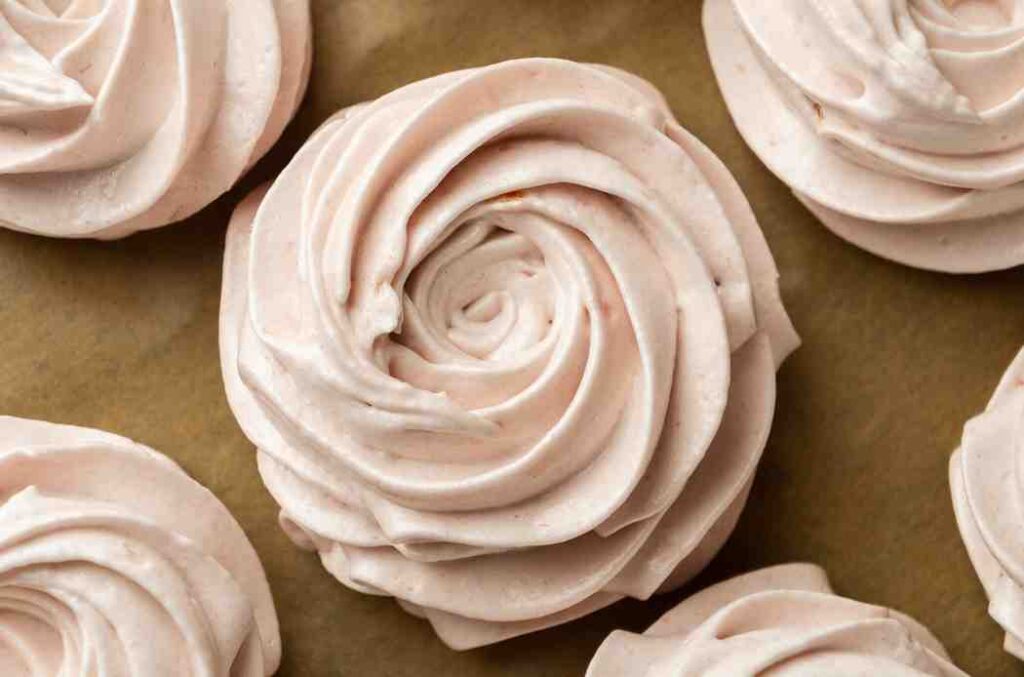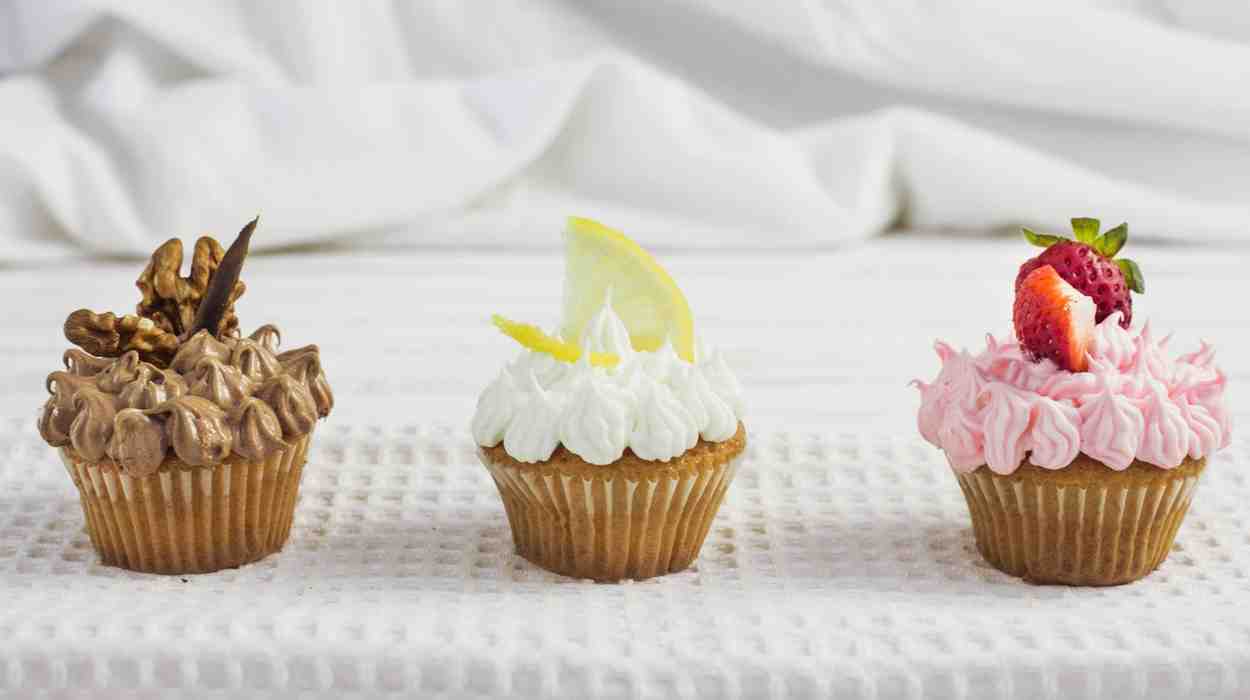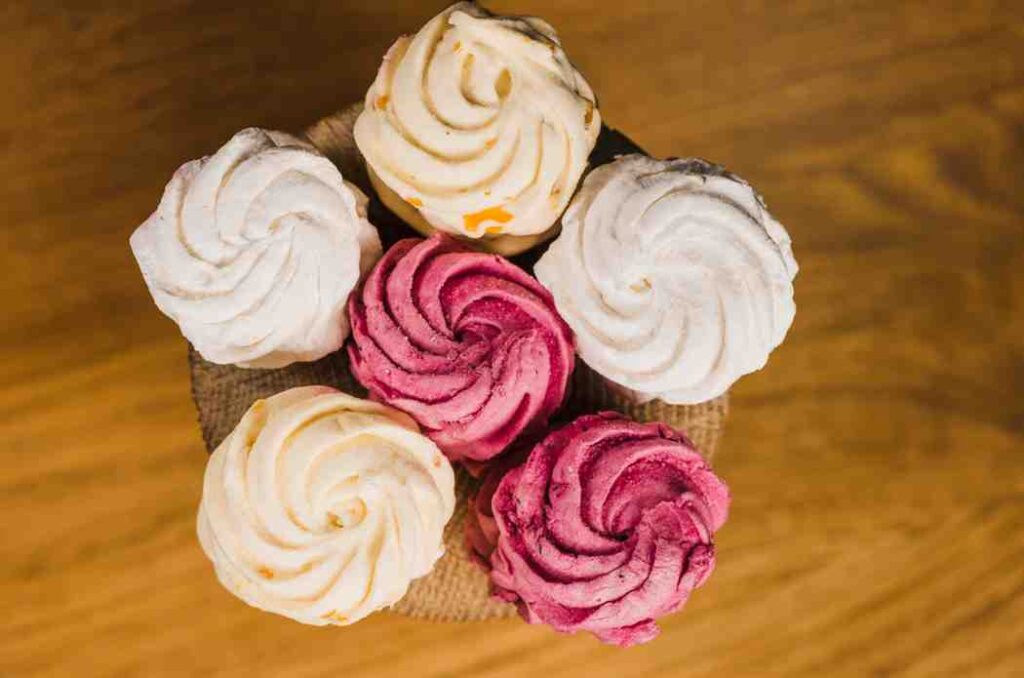Buttercream is one of the most popular frostings for cakes and pastries. Its creamy texture and rich flavor make it a favorite for both beginner and professional bakers. Whether you’re frosting cakes, decorating cupcakes, or using it as a filling, mastering buttercream will elevate your desserts. With several types to choose from, each variation offers something unique.
What Is Buttercream?
Buttercream is a frosting made by whipping butter with sugar. Some versions also include egg whites, yolks, or cream. The result is a rich, smooth frosting that’s easy to spread and pipe. Buttercream’s versatility makes it a go-to choice for decorating and filling cakes.
Common Uses for Buttercream
- Cake frosting: Provides a rich, smooth finish.
- Cupcake topping: Piped into decorative swirls.
- Filling: Perfect for layering between cakes or pastries.
- Piping: Great for creating intricate designs, borders, or flowers.
Ingredients and Tools for Making Buttercream
Buttercream requires just a few basic ingredients, but their quality matters. For classic American buttercream, you’ll need:
- Unsalted butter: Provides richness and structure.
- Powdered sugar: Sweetens the frosting while ensuring a smooth texture.
- Milk or cream: Adjusts the consistency.
- Vanilla extract: Adds flavor.
- Mixer: A stand mixer or hand mixer is essential for proper mixing.
Key Tips for Success
- Use softened butter: Soft butter ensures a smooth, creamy texture.
- Sift powdered sugar: This prevents lumps and ensures the frosting stays smooth.
- Don’t overmix: Overmixing can make the buttercream too airy, which affects its texture.

How to Make American Buttercream – Step-by-Step Guide
American buttercream is the easiest to make and is perfect for everyday cakes. Here’s how you do it:
- Cream the butter: Beat softened butter with a mixer on medium speed for 2-3 minutes until smooth and fluffy.
- Add powdered sugar: Gradually add sifted powdered sugar, one cup at a time, mixing on low speed. This prevents the sugar from making a mess.
- Add milk and vanilla: Pour in milk and vanilla extract, then mix on medium speed until the frosting becomes smooth and creamy.
- Whip until fluffy: Turn the mixer to high speed and whip the buttercream for another 2-3 minutes. It should become light, airy, and easy to spread or pipe.
Troubleshooting Buttercream: Common Issues and Fixes
Even though buttercream is simple to make, you might run into some issues. Here’s how to fix them:
Stiff Buttercream
- Problem: The frosting feels too thick and is hard to spread.
- Solution: Add a tablespoon of milk or cream, then mix again until the buttercream is smooth and spreadable.
Runny Buttercream
- Problem: The frosting is too soft and won’t hold its shape.
- Solution: Refrigerate the buttercream for 15-20 minutes to firm it up. If it’s still too soft, mix in more powdered sugar to thicken it.
Grainy Texture
- Problem: The buttercream feels grainy.
- Solution: Sift the powdered sugar to avoid lumps. If the texture remains grainy, continue mixing for a few more minutes to smooth it out.
Types of Buttercream
There are several types of buttercream, each offering different textures and flavors. Here are the most common variations:
Swiss Meringue Buttercream
This type of buttercream is silky, light, and less sweet than American buttercream. It’s perfect for more delicate desserts.
- How it’s made: Egg whites and sugar are heated over a double boiler until the sugar dissolves. Then, the mixture is whipped into stiff peaks, and softened butter is added.
- Uses: Ideal for wedding cakes or desserts that need a smooth, elegant finish.
Italian Meringue Buttercream
Italian meringue buttercream is more stable, making it great for detailed piping and decorations.
- How it’s made: Hot sugar syrup is poured into whipped egg whites, forming a stable meringue. Once it cools, butter is whipped in.
- Uses: Perfect for cakes that need to hold up in warmer weather or require intricate designs.
French Buttercream
French buttercream is rich and custard-like because it uses egg yolks. It’s one of the richest buttercream options.
- How it’s made: Hot sugar syrup is added to whipped egg yolks, then softened butter is incorporated for a smooth, rich texture.
- Uses: Best for decadent cakes and pastries where a rich, indulgent frosting is needed.
Flavoring Buttercream
One of the best things about buttercream is how easy it is to flavor. You can customize it to fit the theme or flavor profile of your dessert.
- Chocolate Buttercream: Add melted chocolate or cocoa powder for a rich chocolate flavor.
- Citrus Buttercream: Add lemon or orange zest for a refreshing twist.
- Coffee Buttercream: Dissolve instant coffee in a small amount of water, then mix it into the buttercream.
- Caramel Buttercream: Add caramel sauce for a sweet and salty variation.

Exploring More Buttercream Types and Techniques
Buttercream offers an amazing range of textures, flavors, and techniques that allow bakers to get creative. Understanding the differences between various types of buttercream can help you choose the right one for your cakes, cupcakes, or pastries. In this section, we’ll explore more buttercream variations, along with advanced tips on how to use buttercream in creative ways.
German Buttercream
German buttercream is known for its creamy, custard-like texture. It’s less sweet than other types, thanks to its custard base made from pastry cream. This type of buttercream provides a rich, smooth flavor that complements many cakes and desserts.
How to Make German Buttercream
- Make pastry cream: Start by making a simple pastry cream with egg yolks, sugar, milk, and cornstarch. Cook this mixture until it thickens, then let it cool completely.
- Whip the butter: In a separate bowl, beat softened butter until fluffy and smooth.
- Combine: Gradually add the cooled pastry cream to the whipped butter. Beat the mixture on medium speed until it’s fully incorporated and fluffy.
Uses of German Buttercream
- Filling for layer cakes: Its creamy texture makes it perfect for spreading between cake layers.
- Tarts and pastries: German buttercream pairs beautifully with fruit-based desserts due to its rich yet delicate flavor.
Ermine Buttercream (Flour Buttercream)
Ermine buttercream is an old-fashioned frosting that was traditionally used to frost red velvet cakes. This type is made with a cooked flour and milk base, which gives it a light, whipped texture. It’s less sweet than American buttercream, making it ideal for bakers who prefer a more subtle frosting.
How to Make Ermine Buttercream
- Cook the base: Mix flour, sugar, and milk in a saucepan. Cook over medium heat, whisking constantly, until the mixture thickens and becomes smooth. Allow it to cool completely before continuing.
- Whip the butter: In another bowl, beat softened butter until fluffy.
- Combine: Gradually add the cooled flour mixture to the butter and beat on medium speed until light and fluffy.
Uses of Ermine Buttercream
- Perfect for vintage cakes: Ermine buttercream has a light texture that works well with classic cakes, such as red velvet.
- Cupcakes: Its smooth texture makes it easy to pipe and spread on cupcakes.
Using Buttercream in Different Ways
Once you’ve mastered the different types of buttercream, the next step is learning how to use it creatively. Buttercream can be used for much more than just basic frosting. Here are some advanced techniques and ideas for getting the most out of your buttercream.
Piping Designs and Decorations
Buttercream is one of the most versatile frostings for piping because it holds its shape well. By using different piping tips, you can create intricate designs that make your cakes and cupcakes stand out.
- Rosettes and Swirls: Use a star tip to create rosettes and swirls on top of cupcakes or around the edges of cakes.
- Buttercream flowers: Use petal and leaf tips to create buttercream flowers. Practice on parchment paper first, then transfer the flowers to your cake once you’re happy with them.
- Textured borders: Try using different piping tips to create borders with textured patterns, such as scalloped edges or rope designs.

Ombre Buttercream Effect
An ombre effect is when the buttercream color gradually fades from dark to light. This technique is popular for creating a modern, stylish look on cakes.
- Divide the buttercream: Separate your buttercream into three or four bowls, adding more food coloring to each bowl to create varying shades of the same color.
- Frost in layers: Start by spreading the darkest shade of buttercream on the bottom of the cake. Gradually work your way up, using lighter shades as you move toward the top.
- Smooth the frosting: Use a bench scraper to smooth the sides of the cake, blending the colors slightly to create a seamless transition.
Sculpting with Buttercream
Buttercream is not only for spreading; it can also be used to sculpt 3D elements on cakes. If you want to add a unique design, like ruffles or textured layers, buttercream is a great medium to work with.
- Ruffles: Use a petal tip to pipe buttercream in soft, ruffled layers. This works well for wedding cakes or elegant birthday cakes.
- Texture: Create a textured look by using a small spatula to add layers and ridges to the buttercream, mimicking the look of fabric or leaves.
Adding Flavor to Buttercream
One of the best things about buttercream is how easy it is to customize. You can infuse buttercream with a variety of flavors to suit any type of dessert. Here are some ideas for flavor variations you can try:
Fruit-Infused Buttercream
Fresh or freeze-dried fruit can be used to add bright, natural flavors to buttercream.
- Berry buttercream: Add freeze-dried strawberries, raspberries, or blueberries to your buttercream. Blend the freeze-dried fruit into a fine powder, then fold it into the frosting.
- Citrus buttercream: Add lemon, orange, or lime zest, along with a little juice, to create a zesty, refreshing buttercream. This pairs wonderfully with vanilla cakes or fruit tarts.
Nut Butter Buttercream
Nut butter adds richness and a savory element to buttercream.
- Peanut butter buttercream: Add smooth peanut butter to your buttercream for a creamy, nutty flavor. This works well with chocolate cakes or banana-flavored desserts.
- Almond buttercream: Mix almond extract into your buttercream for a subtle nutty flavor. It pairs nicely with vanilla or almond-flavored cakes.
Liqueur-Infused Buttercream
For a more sophisticated flavor, try adding liqueur to your buttercream.
- Bailey’s Irish Cream buttercream: Add a splash of Bailey’s Irish Cream to give the frosting a rich, boozy flavor. This goes great with chocolate or coffee-flavored cakes.
- Grand Marnier buttercream: Mix in Grand Marnier for a citrusy, slightly alcoholic flavor. It’s perfect for pairing with orange or chocolate cakes.
Storage and Shelf Life of Buttercream
Buttercream can be made ahead of time, which is convenient if you need to prepare in advance for a special event. Here are some tips on how to store buttercream and extend its shelf life.
Short-Term Storage
- Refrigeration: Buttercream can be stored in an airtight container in the refrigerator for up to one week. Before using, bring it to room temperature and give it a quick mix to restore its smooth texture.
Long-Term Storage
- Freezing: You can freeze buttercream for up to three months. Store it in an airtight container or a freezer bag. When you’re ready to use it, let it thaw overnight in the fridge, then mix it again to restore its consistency.
Frequently Asked Questions About Buttercream
How do I fix buttercream that’s too sweet?
If your buttercream tastes too sweet, you can balance it out by adding a pinch of salt or a little more butter. For Swiss or Italian meringue buttercream, reducing the sugar from the start can also help.
Can I make buttercream in advance?
Yes, buttercream can be made up to a week in advance and stored in the refrigerator. If you want to store it longer, it can be frozen for several months.
Why is my buttercream splitting?
Buttercream can split if the butter and meringue (for Swiss or Italian) are at different temperatures. To fix this, gently warm the buttercream by placing the mixing bowl over a warm water bath and then whipping it again until it comes back together.

